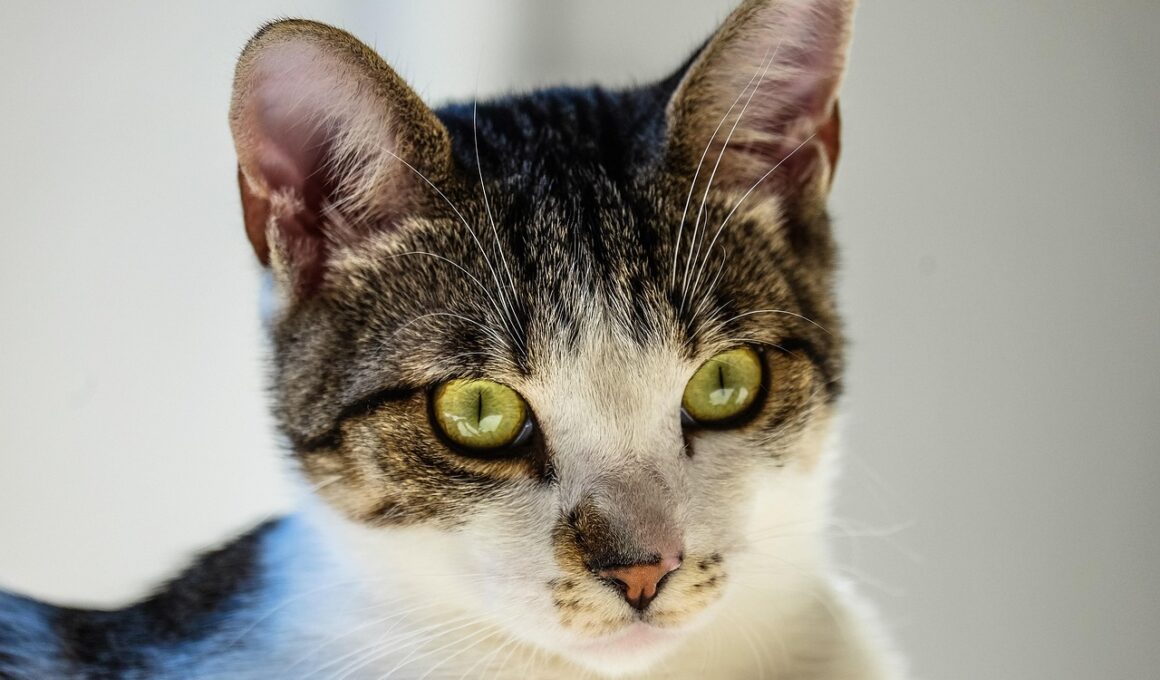Understanding Residential Zoning and Its Effects on Cat Sanctuaries
Residential zoning laws play a crucial role in the establishment and operation of cat sanctuaries. These laws dictate where cat sanctuaries can be located, what structures can be built on properties, and how many animals can be housed. Understanding these regulations is essential for those looking to start or manage a cat sanctuary. Violating zoning laws can lead to fines or even closure of the sanctuary. Furthermore, local communities have varying attitudes towards cat sanctuaries, which can influence the enforcement of zoning regulations. It’s vital for sanctuary operators to engage with local governments and communities to ensure compliance and foster support. By educating local authorities about the benefits of cat sanctuaries, such as reducing feral cat populations and promoting animal welfare, operators can build positive relationships. Additionally, consulting with legal experts can help navigate complex zoning laws, enabling successful sanctuary establishment. Overall, effectively understanding and adhering to zoning regulations enhances the long-term viability of cat sanctuaries, ensuring that they serve their purpose in a legally compliant manner while benefiting community and animal welfare alike.
In many jurisdictions, zoning laws are classified into various categories including residential, commercial, and agricultural. Each category has distinct restrictions and allowances for different types of animal care facilities, including cat sanctuaries. Usually, residential zoning laws are the most restrictive, particularly regarding the number of animals allowed and proximity to neighbors. It is critical to examine local regulations to determine where cat sanctuaries can even be permitted. Factors such as property size, layout, and neighborhood density significantly impact zoning compliance. Moreover, these laws may require specific licenses or permits to operate sanctuaries within residential zones. A more extensive investigation into neighbor opinions and community norms can unveil necessary insights about potential approval. Issues like noise control, sanitation, and property upkeep often become areas of concern for residents living near a sanctuary. Addressing these issues early in the planning phase can lead to developing effective operational practices that minimize conflict. Ultimately, granular knowledge of zoning restrictions helps prospective sanctuary operators ensure a smooth approval process and better integrate into the local community, thus creating a more sustainable sanctuary environment.
The Importance of Community Engagement
Community engagement is pivotal in navigating the complexities of residential zoning laws for cat sanctuaries. Building relationships with local residents and authorities enhances the likelihood of successful sanctuary operation. Many zoning issues often stem from misunderstandings or misinformation about the operations of a sanctuary. By hosting informational meetings and outreach events, sanctuary operators can educate the community on their mission, goals, and the positive impacts of their work. Such transparency fosters trust and can significantly lower resistance from locals. Inviting community members to participate in sanctuary activities, such as volunteer days or awareness events, creates ownership and increases overall support. Additionally, local stakeholders can provide invaluable feedback that can improve operational practices. Engaging community members allows sanctuary operators to address concerns directly and demonstrates a commitment to coexisting harmoniously with the neighbors. Establishing partnerships with local businesses, schools, or animal organizations can also unify community efforts in promoting animal rescue and welfare, further solidifying the sanctuary’s place in the area. Overall, community engagement not only helps navigate zoning laws but also enriches the sanctuary’s relationships with stakeholders, enhancing operational sustainability.
When seeking to establish a cat sanctuary, careful consideration of zoning laws is vital, as violations can have dire consequences. Legal battles can become lengthy and costly. Understanding the land use regulations applicable to both potential and existing sanctuaries can facilitate smoother operations. Many municipalities require applicants to demonstrate plans for waste management, noise control, and habitat upkeep as part of their permit application. Regulations governing these aspects are designed to mitigate community disturbance. Cat sanctuaries must frequently prove that they can maintain clean, safe, and well-kept environments for their feline residents. Sanitation practices, such as waste disposal and litter management, often dictate zoning compliance. Operators should prepare thorough plans for reducing odors and upkeep that meet or exceed municipal requirements. Investigating best practices for managing a sanctuary can help ensure compliance while optimizing resident comfort. Furthermore, ensuring that adequate space is allocated for enclosures and animal interaction zones is crucial. By understanding land regulations and preparing appropriate documentation, cat sanctuaries can significantly enhance their chances of receiving the necessary permits, ultimately contributing positively to community welfare and animal rescue efforts.
Zoning Regulations and Animal Welfare
Zoning regulations also play a pivotal role in the welfare of the cats residing in sanctuaries. Sustainable and No Kill practices can be better implemented in sanctuaries with suitable zoning provisions that allow for expansion and adequate space. Ensuring the humane treatment of animals not only complies with animal welfare laws but can also bolster community support for the sanctuary. Adequate space correlates with better socialization, mental stimulation, and physical health for cats. Cat sanctuaries must, therefore, ensure that their operational facilities adhere to zoning laws that permit the necessary infrastructure for humane care. Regulations often stipulate restrictions on confinement and shelter maintenance that can directly affect animal welfare. Additionally, ensuring that cat to human ratios are comfortable for both parties can directly support a more positive living environment. A deeper comprehension of these zoning laws impacts veterinary care accessibility, living conditions, and the quality of services offered. In this light, applicants must not only focus on legality but also strive for a deeper understanding of how zoning regulations can enhance animal welfare within their sanctuaries.
Another important aspect to consider is how residential zoning laws differ across jurisdictions. Depending on local regulations, some areas may impose stricter control on how many cats a sanctuary can house or where such sanctuaries can even be established. In some places, zoning ordinances may prevent any animal-related establishments from operating near schools, churches, or residential areas. This restriction may pose difficulties in finding suitable properties for cat sanctuaries. Moreover, different states and cities can vary significantly in terms of zoning length and depth, making it critical for sanctuary operators to conduct thorough research on their specific area. Collaborating with local attorneys or zoning consultants helps ensure accurate interpretations of these complex laws, thus enabling successful property acquisitions. In some cases, applying for special use permits may offer legal pathways to operate under conditions that otherwise violate standard zoning guidelines. Pursuing these avenues may require asserting the benefits the sanctuary provides to community welfare, allowing for increased acceptance. Overall, comprehending both regional differences and the legal pathways available for establishing a sanctuary will streamline the planning and operational phases.
Pathways to Compliance
Successfully navigating residential zoning laws typically requires a comprehensive approach to compliance. First, conducting a feasibility study can pinpoint potential zoning challenges regarding cat sanctuary operations. Conducting a similar study can highlight essential community needs, thereby creating a compelling case when engaging local authorities. Understanding the specific animal welfare laws within the zoning category of the chosen property ensures that sanctuaries meet both local and state requirements. Formal applications should be accompanied by a robust plan detailing the sanctuary’s purpose, layout, and operational strategies. Engaging with local planners can provide additional insights into zoning regulations, enabling a more tailored approach to permit applications. Furthermore, cat sanctuary operators may need to outline educational programs and outreach initiatives aimed at the community to simultaneously address local concerns about animal welfare. Comprehensive documentation showcasing community benefits will reinforce the argument for zoning compliance. Sanctioned collaborations with local organizations can enrich application integrity while presenting a united front. In essence, strategic compliance pathways enable cat sanctuaries to mitigate the chance of conflict, ensuring they align with community expectations and legal mandates while fulfilling their missions effectively.
Understanding and adhering to effective zoning practices serves an essential function in the future of cat sanctuaries. By ensuring compliance with both local and state regulations, sanctuaries can avoid legal obstacles while contributing positively to their community. Enforcing proper zoning laws not only safeguards the sanctuaries themselves but also protects the welfare of the cats they house and the surrounding community’s quality of life. Community education about the benefits of rescue and rehabilitation, proper zoning guidelines, and humane animal care fosters favorable relationships among neighbors, sanctuary operators, and local officials. Permit applications, outreach efforts, and compliance workshops all create pathways for enhancing mutual understanding and support. Consequently, successful navigation of residential zoning laws cultivates an environment where cat sanctuaries can thrive. Ultimately, when zoning regulations align with animal welfare goals, the result is a progressive model for responsible animal care that can inspire similar practices in other communities. As more sanctuaries align themselves with compliant and community-focused practices, the overall public perception and acceptance of cat sanctuaries can improve. Continuous advocacy for better zoning practices ultimately elevates the standards of care and attention in the world of animal welfare, contributing to sustainable change.


